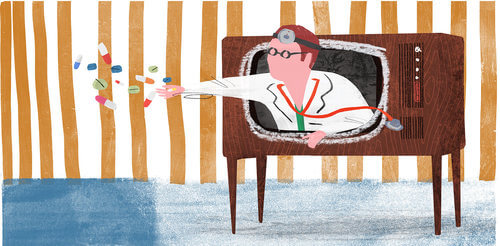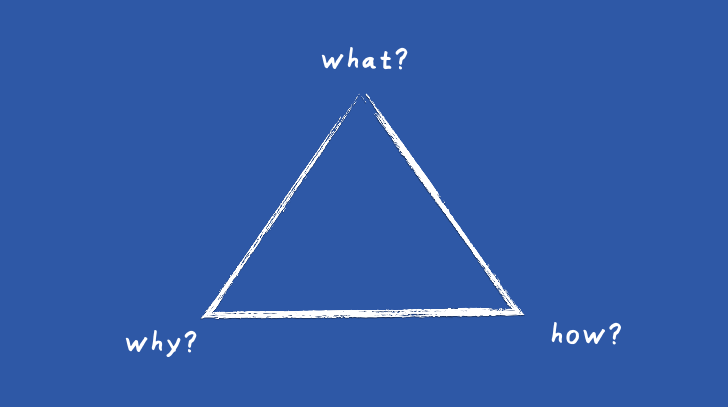Can we revolutionise Telehealth?

At Made by Many we passionately believe that design and technology can make a huge difference to people’s lives – especially in the sphere of health and wellness. That’s why over the next few weeks we’ll be posting a series of pieces on the thinking and making we’ve been doing in this area.
We’ll publish some reports on a fascinating project we’ve been incubating in our London studio and offer some further research and insight on the current state of technology for health (including mental health).
Let’s open this series with a story about the area of health technology which we’ve been looking at most closely, something which is absolutely essential but is falling way short of its potential: telehealth.
Currently, a quarter of the UK population – around 15.4 million people – have a long-term health condition and in England their care absorbs 70 per cent of hospital and primary care budgets. The opportunity to design a service that enables people to feel in control of their chronic long-term condition, rather than it controlling them, feels like a very compelling area for exploration, which is why we’ve been doing some active prototyping work within it.
Meanwhile, if you don’t know what telehealth is, you’re probably not alone. It may sound like some Eighties relic in which doctors are beamed into people’s homes through large, walnut-veneer TV sets, but if you can move beyond the name, this area of health technology offers a lot of potential for innovation. In fact, far from being outmoded, parallels can be drawn with modern day wearables and self-quantification because essentially, telehealth is both of these things but with a bit more soul and a human on the other end of the line.
A quick dip into its slightly blighted history:
The concept of telehealth broadly encompasses remote monitoring services for those with chronic conditions, where nurses track data within secure systems. They communicate with patients through a variety of channels to prevent unnecessary trips to A&E units and surgeries, and make interventions as and when necessary to keep patients on track with desired clinical outcomes.
Telehealth has been subjected to a number of randomised control trials (RCTs) over the years, including one eight-year trial in the UK. It appears that these have either failed to evidence the efficacy of the telehealth approach, or have been somewhat inconclusive. At some point, a few companies got busy (and probably quite wealthy) selling the data-tracking hardware (such as blood pressure monitors and pulse oximeters) in large doses to CCGs (clinical commissioning groups) and hospitals. These rapidly turned into NHS landfill as they were untethered to any clinical service, arguably sullying the reputation of telehealth further.
Having said that, telehealth has demonstrated little pockets of value all over the country where it is practiced in a more localised way. For example, the much cited Stoke-on-Trent Florence or Flo ‘simple telehealth’ system which is text-based and has improved convenience and allowed certain clinical outcomes to be achieved faster.
So, we’ve been intrigued by telehealth for a little while – it’s an interesting, multi-faceted system that spans the physical and digital worlds. There are telehealth services out there but they’re not the beautiful intuitive experiences that people – either patients or nurses – really deserve or more importantly, have come to expect from other service experiences. It’s a compelling opportunity space for a company like ours which believes in the combination of technology, design and product to create meaningful, delightful and useful experiences.
How to unlock this potential? Most fortuitously, we recently met an expert in this space who thinks in a similar way to us. They are deeply knowledgeable and experienced around the topic of telehealth, totally committed to transforming it, and up for a big experiment.
However, we realised that we couldn't plunge straight into the NHS. Not a chance. We’d need to think about building a direct-to-consumer proposition first in order to acquire our evidence base and then approach the NHS. This means of course, designing a system with the NHS in mind right from the outset and understanding the relevant care pathways and needs of GPs, among other considerations.
And so began our research. These were the big questions we needed to answer in order to proceed:
• Which critical long-term condition to start with and what’s the right proposition? (We made an assumption here that if we are to successfully design this for one condition, we could then use it as a blueprint for others)
• How do GPs feel about a direct-to-consumer service like this? Would they embrace it or feel threatened?
• How would we acquire new users? Would the cost of acquisition be prohibitive given no GP referral?
• What precedents could we learn from with respect to direct-to-consumer health offers? Can we frame the proposition in such a way that it is not seen as something you can kind of get free from the NHS?
In the next post I’ll share some of our findings, the challenges we face and some wobbles along the way before revealing, a bit later, something really interesting we’ve prototyped in this realm.
Watch this space.
Continue reading
A new digital presence for the World Economic Forum
When global attention turned to the World Economic Forum during its annual meeting in Davos this January, readers logging on to www.weforum.org from aroun...
The right way to be wrong
What growing up under communism taught me about the value of prototyping.
What is a product manager anyway?
I recently gave a talk at Front-end London to try to answer the question: “What the hell is a Product Manager anyway?”. The short answer is that we care a...


